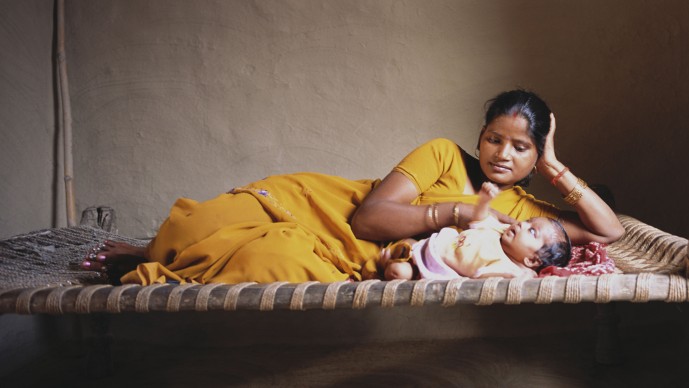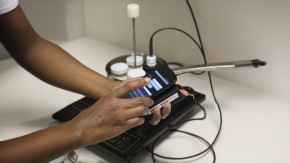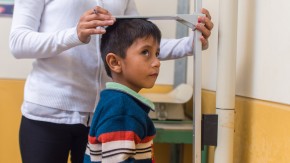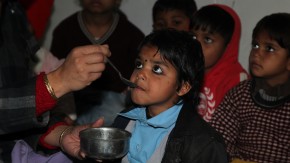
In 2003, while she was about 7 months pregnant, biochemist Melissa Moore fell gravely ill. She had preeclampsia, a dangerous hypertensive condition that affects about 8 percent of pregnant women in the United States. If left untreated, preeclampsia can cause dangerously high blood pressure, seizures, liver and kidney failure, and even death.
The most effective treatment for preeclampsia is giving birth, since most of the time, once a pregnant woman is no longer pregnant, her symptoms start to vanish almost immediately. But that means women and their doctors must walk a terrible tightrope: extending their pregnancies for as long as they can, gambling with their own health in the process, until they have no choice but to have the baby prematurely - often via emergency C-section, which carries its own complications. Then they begin to recover - but sometimes, their babies aren't so lucky.
In the U.S., where many women and babies have access to prenatal care and neonatal intensive care units (NICUs), preeclampsia causes about 100,000 premature births and more than 10,000 infant deaths every year. In the developing world, where pre- and post-natal care is less accessible, preeclampsia kills 500,000 babies (and approximately 75,000 mothers) annually.
Dr. Moore was lucky: she got the care she needed, and she and her daughter both recovered from their harrowing experience. And while she was in the hospital in Boston, she met a young nephrologist studying preeclampsia, Dr. Ananth Karumanchi, who made an unusual request: could he have Dr. Moore's placenta after she gave birth? She said yes, and asked why. He started to give her a simple, patient-friendly explanation - for complicated reasons, the placenta induces preeclampsia - but Dr. Moore explained that she was a scientist herself and pushed him for more detail.
As it turned out, Dr. Karumanchi - a practitioner at Beth Israel Deaconess Medical Center and a professor at Harvard - had just published a seminal paper on preeclampsia, finding that the condition was linked to the overexpression of the protein known as sFLT1 in a pregnant woman's bloodstream. It also turned out that the reason for that overexpression had to do with what Dr. Moore studied in her lab at Brandeis: RNA processing. They were a professional match made in heaven.
But life got in the way, and the two scientists lost touch. Fate threw them together again when their daughters attended the same preschool and became close friends, and then again in 2010 - just after the Gates foundation opened a Grand Challenges Explorations (GCE) call for proposals focusing on new technologies to improve the health of mothers and newborns.
For the GCE grant they were awarded, Moore and Karumanchi devised a project that perfectly overlapped their two areas of expertise. If preeclampsia was the result of too much sFLT1 protein in a woman's bloodstream, they surmised, why not go right to the source of the problem and try to turn off the sFLT1 at the tap? To do this, they would use a technique called RNA silencing: deploying molecules known as small interfering RNA (siRNA) that could target and block the messenger RNA (mRNA) molecules in the placenta that produced the sFLT1 protein. If the technique worked, and if the team could produce siRNAs that were stable at room temperature for long periods of time and only needed to be administered once, then the treatment could be deployed all over the world, to women who badly needed it.
At the end of that first grant period, the team had successfully shown that their concept worked - at least in mice. In fact, when Dr. Moore and Dr. Karumanchi gave pregnant mice siRNAs targeting the molecules that produced the sFLT1 protein, they found they were able to reduce the amount of sFLT1 in the mice's blood by as much as 50 percent. Even better: the treatment did not seem to affect the health of the baby mice at all.
In 2013, the team added two new members: Dr. Anastasia Khvorova, an expert on RNA therapeutics at the University of Massachusetts medical school, and Professor Annemarie Hennessey, the dean of the School of Medicine at Western Sydney University, whose baboon model for preeclampsia could help Moore and Karumanchi tell whether their siRNA therapy would work in primates as well as mice. They received a second, larger grant from the foundation along with one from the National Institutes of Health.
The results of this work were published in Nature Biotechnology in December 2018, and they're extremely promising. "In a baboon preeclampsia model," the authors wrote, just "a single dose of siRNAs suppressed sFLT1 overexpression and clinical signs of preeclampsia."
What's next? We're much closer now to a magic bullet - a one-dose therapy that can protect moms and babies against this terrifying illness - but a few major obstacles remain. For understandable reasons, it's hard to persuade pharmaceutical companies to invest in research on pregnant women and their babies - but this reluctance is also the reason why we haven't had any new treatments for preeclampsia for 50 years. For now, Dr. Moore's team is looking for funding to manufacture the lead compound, do toxicity studies on non-human primates, and then, down the road, start a Phase I study on humans.
The long-term goal is to create a low-cost, easy-to-dose therapy (and then, the team hopes, a diagnostic tool to go with it) that can be available to and accessible for every woman around the world. In a recent interview with UMass Med Now, Dr. Moore explained why her team's work matters so urgently. "Getting pregnant," she said, "shouldn't be one of the most dangerous things a woman can do."



